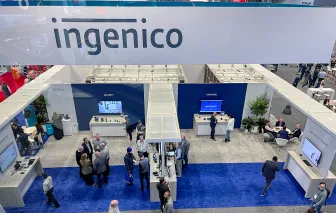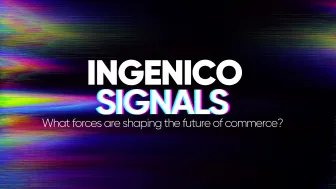The act of payment is a part of our daily lives that many take for granted. And yet, it is multifaceted, intricate, covers multiple touchpoints and its functionality is increasing. The humble payment terminal, in itself a complex device, is a key component in this fascinating jigsaw. However, payment terminals don’t exist in isolation, instead they form part of a terminal estate, perhaps owned by a bank, a merchant service provider or large retailer.
Just as payment innovations evolve at pace, estates are becoming increasingly diverse. They must cater for new acceptance points for merchants, comply with the latest regulations and continue to offer new services to generate additional revenue streams.
These factors, which are inherent to the nature of a terminal estate, have increased the pressure on owners to ensure that their payment terminals are always operational and ready to perform transactions. They need to closely monitor their estate’s configurations and behaviours and provide merchants with a best-in-class service while controlling overall costs.
Without a robust system in place, the task of monitoring and managing the deployed estate may turn very quickly into a high-cost centre, opening the door to fraud risks and dissatisfied merchants.
So, what challenges need to be addressed to avoid losing control of an estate’s management?
Challenge number 1: How to manage a heterogenous estate
The diversity of terminal estates is propelled by different factors. For example, many organisations operate across different countries, each of which will have different references driven by regulation, technology, compatibility, and customer preferences.
The variety of influences also include:
- The deployment of new types of terminals to match specific merchant needs
- Different versions of software and payment applications
- Logistics and field services, which could differ between countries
- Upgrading an entire estate at once to meet regulation mandates, for example PCI updates
- Progressive projects managed over time.
Managing different types of terminals with different configurations may become tough to handle, especially when security updates are required. How does the estate owner make sure that the right terminal has the right configuration (application, parameters, keys, etc.) and is updated regularly to avoid any security breach?
Estate managers need to track every terminal through its entire life cycle, setting up the pre-defined configurations and pushing software updates when needed. Coherence starts with “one single” tool to manage an heterogenous estate.

Challenge number 2: How to ensure the security and integrity of an estate
It’s a simple premise that the larger the estate, the harder it is to make sure that all the terminals are up and running. Large volumes are difficult to manage, so a suitable estate management tool is required. It’s also important to remember that terminals represent a security risk and require a system in place to alert of any unusual or fraudulent activities.
Payment applications on terminals have hundreds of parameters determining what will happen when you insert or swipe your card. Broadly speaking, these parameters fall into two types:
- A mix of rules defined by the acquirer which can only be managed by a few key people
- A reflection of the contract that has been signed between the merchant and the acquirer.
Both are business critical for the acquirer and their relationship with the merchant
Parameters are loaded into an Estate Manager which allows the user to change the constraints around the payment terminal, influencing what the terminal is doing and determining how it will respond. This process presents significant risk unless it is performed by someone with the right knowledge and expertise. So, who should be given access, and how can you monitor what they are doing with all the terminal information?
The solution is to segregate the scope of access to the Estate Management tool, depending on the skill level and payment expertise. By doing so, the risk of tampering with the system to create fraud by impacting the payment rules is controlled. The Estate Manager provides a global point of access to an estate, so for those with less experience, a more limited scope of activity is required. Low risk tasks include reporting on where a payment terminal is located, how many are in the field, scheduled software updates, and so on.
Challenge number 3: Does cost efficiency sit well with the principle of estate management?
Estate management encompasses a wide range of essential requirements, which include:
- Remote key injection
- Software application uploads and updates
- Advertising campaigns
- Repairs and other support
- Guidance for merchants
But, does each of these requirements need a specialist tool, and will employees have to be trained for each one? Will the estate owner be expected to send field agents to a merchant’s location to guide, provide support and even replace the printer roll paper when they request it?
The more tools there are to use, the more costly and complex the estate will be to manage. Cost-efficiency can only be reached by consolidating all the services into one single solution. Advertising campaigns and software updates can be automated to avoid errors and retain consistency, whilst remote diagnosis can be used to avoid field interventions.
The financial implications of such interventions differ between countries in a diverse picture closely related to labour costs. For some, the operational cost of an engineer making a field visit to a customer offers good value economically.
For example, in Thailand, field engineers travel to merchants on bikes to get to customers quickly and perform on site updates and other terminal fixes. The challenge here is how to monitor what is being done and ensure any follow ups take place. Which terminal has been repaired, what has been done to it, are there any matters outstanding? It is also important to note that not all use cases can be addressed in the field, while an Estate Manager allows for all situations and is PCI compliant, for example key injection is forbidden to take place in person by PCI rules.
Where field interventions are the norm, there is a need to invest in a reporting tool to ensure a terminal estate is monitored and customer requirements don’t get lost. Possibly the cost is not the point here, but logistically the follow up is different. As an Estate Owner without a management tool, there is no guarantee you will be able to reach your target, increasing the level of risk and resultant merchant churn.
In the UK, western Europe, Canada and the US, the rates for field interventions are higher, typically at 50-80 of the local currency. To achieve cost reductions, the Estate Manager offers operational efficiencies with a larger number of tasks that can be performed remotely. It provides one single point defining what’s happening and repeat tasks can be performed on all terminals reliably, providing the confidence of success.
Regardless of which country you are in, there is a benefit to be gained. Estate Managers can perform many types of actions, reducing labour costs by controlling more of the estate centrally. But those managing the estate must be skilled employees, confident in their payments knowledge.
Challenge number 4: How to ensure merchant satisfaction
Merchants pay regular fees for support and this service must be provided within a defined timeframe as described in the contractual agreement. The larger the estate, the more challenging it is to support the merchant within a short timeframe. How can the estate manager send an agent to the merchant’s location and fix the issue in few days?
The best way to proceed is to leverage remote diagnosis through a desktop, to quickly identify the nature of the problem and turn field intervention into the option of last resort. When merchants report a problem, they don’t have much time to spend on the phone and they will be anxious about any downtime and loss of revenue. Helpdesks must be able to respond speedily with a user-friendly solution.
Merchant satisfaction is met by a quick response rate, but also by anticipating any issues that may occur.
This is why the Estate Management system must allow the set-up of “alarms” in the Estate Manager to advise about any forthcoming issues. Problems are equally anticipated with regular software updates. The Estate Management system should be able to schedule and launch these updates at night time to avoid impacting a merchants’ business and ensure seamless uploads.
Challenge number 5: How to use an Estate Manager solution without impacting existing IT infrastructures
Most estate managers already have tools and solutions to monitor their estate. But does this mean that they need to get rid of their existing system to benefit from a more comprehensive solution? Or even worse, do they need to experiment with both tools to benefit from the synergies of new and existing solutions?
Again, the less tools that are used, the more efficient the solution will be. This will avoid the expenditure and time lost for additional training, provide a simpler user experience, and control the costs of maintenance provision.
Enhancing the existing estate management system via APIs is the most efficient scenario. A seamless integration that will allow both systems to interact and achieve the best outcome for the estate owner and their customers.
Ingenico’s Terminal Estate Manager – TEM:
Large payment terminal estates require a high performing Estate Manager. By using one single tool to control more of the estate centrally, segregating the scope of access to ensure security and leveraging new tools for remote diagnosis, the golden ticket of reduced costs and increased merchant satisfaction can be achieved.
Already deployed in over 65 countries with more than 7.5 million terminals connected, Ingenico's Estate Manager solution (TEM) is well placed to support estate owners, giving them complete knowledge and full control of their payment ecosystem.
TEM offers a wide range of core and advanced features including software provisioning, parameter management, remote diagnostics, and terminal lifecycle management. These high-performing functionalities facilitate proactive and preventive estate management, reducing maintenance costs.
If you would like to learn more about Ingenico’s Terminal Estate Manager, please get in touch for more information.












